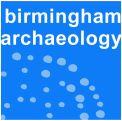Wivenhoe House, Wivenhoe Park, University of Essex, Colchester, Essex. Historic Building Recording
Birmingham Archaeology, 2017. https://doi.org/10.5284/1045794. How to cite using this DOI
Data copyright © University of Birmingham unless otherwise stated
This work is licensed under the ADS Terms of Use and Access.
Primary contact
Historic England
1 Waterhouse Square
138-142 Holborn
London
EC1N 2ST
UK
Tel: 01793 414700
Fax: 01793 414707
Resource identifiers
- ADS Collection: 2935
- DOI:https://doi.org/10.5284/1045794
- How to cite using this DOI
Introduction

Birmingham Archaeology was commissioned in April 2009 by Edge, to prepare a historic building report in respect to Wivenhoe House, Wivenhoe, Park, University of Essex, Colchester, Essex (NGR: NGR TM 03277 24118). The study was prepared in order to ensure that any future renovation work carried out at Wivenhoe House is informed by a detailed and accurate understanding of the historic development of the fabric of the structure. This understanding would greatly contribute to the desired achievement of reinstating, insofar as possible, the historic plan and character of the building’s interior. The principal objective of the current project was to ascertain, from the readily available documentary and graphic sources and onsite visual analysis, the historical development Wivenhoe House.
Wivenhoe House, which was formerly known as Wivenhoe Park or Wyvenhoe Park, is located adjacent to the small town of Wivenhoe, Essex, which sits on the banks of the River Colne. Wivenhoe is approximately five miles east of the historic town of Colchester. The house stands within extensive grounds of beautiful parkland punctuated by three man-made lakes. The University of Essex campus lies to the west of the house, within the boundaries of the original Wivenhoe Park.
The study established that, Wivenhoe House, which is a Grade II* listed building, was originally built in the mid 18th-century for Isaac Martin Rebow to the designs of London architect Thomas Reynolds in a classical style befitting its period. This house, which formed part of the backdrop of John Constable’s 1816 painting ‘Wivenhoe Park’ was completely recast in the Victorian Tudor style in the mid 19th-century. This work was carried out to the designs of notable Victorian architect Thomas Hopper for John Gurdon Rebow, and saw much of the Georgian house altered or removed in time for the visit of Prince Albert to review the Colchester Garrison in 1856. The house was purchased by the Gooch Family in 1902, and was commandeered by the army during both World Wars, and later sold to the University of Essex in the 1960s, which exacted a number of alterations to the interior of the structure. The building’s conversion for use as a hotel and conference facility in the 1970s and 1980s saw further alterations, including the removal of the Victorian grand staircase, and the addition of a hotel room block to the rear.







